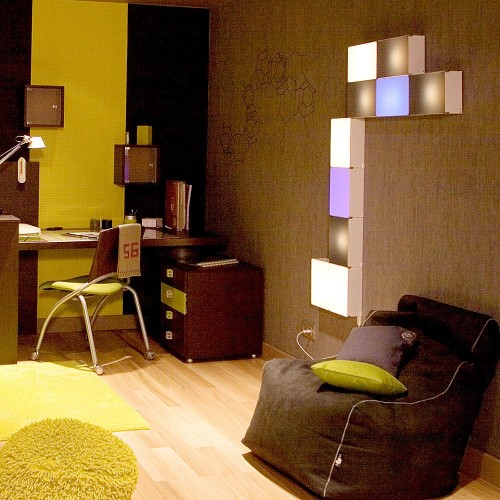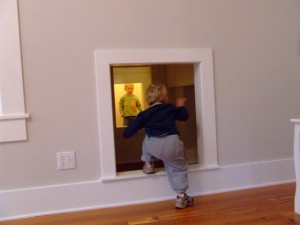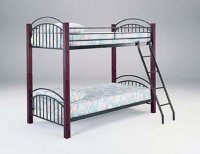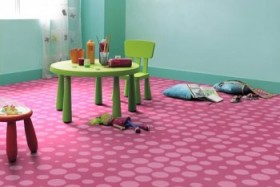Lighting for child’s room
Sunday, March 22nd, 2009 A child’s first room needs to be bright and stimulating as well as practical. Careful planning means it can be easily and inexpensively adapted as the child grows, like this room where a row of simple cupboard units provides not only ample worktop surface for changing nappies, but will later be useful for play, study and storing clothes and toys. The room has a red, yellow and green colour scheme: naive flower design on white for the walls, a larger splash of flowers on the window blinds and a red and white grid design vinyl on the floor - all easy-to-clean and practical.
A child’s first room needs to be bright and stimulating as well as practical. Careful planning means it can be easily and inexpensively adapted as the child grows, like this room where a row of simple cupboard units provides not only ample worktop surface for changing nappies, but will later be useful for play, study and storing clothes and toys. The room has a red, yellow and green colour scheme: naive flower design on white for the walls, a larger splash of flowers on the window blinds and a red and white grid design vinyl on the floor - all easy-to-clean and practical.
Safety is a vital element of design here: electricity sockets are positioned high on the wall, out of reach of toddlers, and provided with covers; windows are protected with lockable bars painted bright green and yellow to match the general colour scheme, while a built-in baby alarm is essential for peace of mind. Lighting has been carefully thought out too with strip lighting at ceiling level behind a bright yellow fascia board and indirect uplighters on the wall, both controlled by dimmer switches for easier night-time feeding. The wall has been painted white between the skirting board and dado rail, to protect the wallpaper from grubby fingers, and there is plenty of room for essentials such as a sturdy cot, covered basket, baby change unit and a nursing chair.
If you can afford it, a separate circuit of low wattage lights is ideal for a child’s room but it is expensive. Whatever you do, try to install dimmer switches so that lights can be dimmed at will and separately, leaving just one light on all night if necessary. Not only is this comforting for the child but it will save running costs.

 The answer to this question will influence how you distribute your space and decorate it. Sleeping space is the first consideration: do they need separate rooms or can they share? Children usually draw the short straw when it comet to handing out bedrooms, but if they are prepared to share, it could be worth giving them the biggest room and freeing up the smallest for a study.
The answer to this question will influence how you distribute your space and decorate it. Sleeping space is the first consideration: do they need separate rooms or can they share? Children usually draw the short straw when it comet to handing out bedrooms, but if they are prepared to share, it could be worth giving them the biggest room and freeing up the smallest for a study. Bunk beds
Bunk beds

